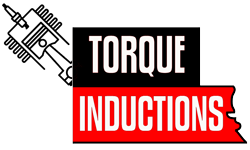- Posted on
- • Classic
Harley-Davidson SX175 – Vintage Dual-Sport Machine
- Author
-
-

- User
- Torque
- Posts by this author
- Posts by this author
-

Harley-Davidson SX175: Classic 2-Stroke Enduro Ride
I first met an SX175 the way most people meet stray dogs: it rolled up uninvited, covered in dust, and refused to leave. 1998, outskirts of Tucson, engine seized tighter than a rusted pickle jar, seat foam erupting like stale popcorn. My buddy’s uncle swore it would “run again with a plug and a prayer.” I didn’t believe him. I still don’t—yet here I am, twenty-five years later, still kicking the same yellow tank every other weekend.
Short, messy back-story
In 1973 Harley-Davidson Italy—still secretly Aermacchi with a Milwaukee forwarding address—needed something bigger than the SX125 but cheaper than the 250. They yanked the 125 crankcase, bored it 2 mm wider, slipped in a 64 mm piston, and called it 173 cc. Marketing rounded up: SX175 sounded faster. They painted the tank black, slapped a bar-and-shield on the shroud, and shipped roughly 6,200 units between ’74 and ’77, most to dealers who’d never sold a dirt bike in their lives.
Frame, or “will this weld hold?”
The cradle is mild-steel so thin you can flex it with one hand—don’t, by the way. The backbone doubles as the oil tank again, which still feels clever until you over-fill and oil burps out the filler neck onto your jeans. Swing-arm is box-section steel so narrow it looks like a ruler with delusions of grandeur. Rear shocks are Girling knock-offs, five preload clicks that go from “marshmallow” to “slightly firmer marshmallow.” Up front, 32 mm Ceriani forks slide through stamped-steel triple clamps; the fork boots are long gone on every survivor I’ve seen, victims of sun rot and flying stones.
Engine – the accidental sweetheart
Air-cooled, piston-port, 173 cc, 6.8:1 compression if you believe the manual (I don’t). Factory claimed 20 hp at 8,800 rpm. On a cold morning with fresh 32:1 and a clean air filter it feels closer to 25, which is hilarious because the bike weighs 92 kg with half a tank. Induction is a 30 mm Dell’Orto PHBH that loves to drip fuel on the swing-arm pivot; exhaust is a bulbous expansion chamber that snakes under the engine and exits high on the right, spraying premix on the rear tire like a mischievous cat. Four-speed, right-foot shift, neutral hiding somewhere between second and third—same game of hide-and-seek as the 125, but now you’re going faster when you miss it.
Cycle parts – charming until they aren’t
Front brake is a 180 mm single-leading-shoe drum that works better as a conversation piece. Rear is identical but smaller; lock it on gravel and the bike swaps ends faster than a politician on Twitter. Wheels: 21-inch front, 18-inch rear, both laced to steel rims that dent if you stare at them too hard. Knobbies are Cheng-Shin copies of copies; they clear mud about as well as a screen door clears water.
Riding impressions – controlled chaos
First kick usually produces a wet sneeze, the second a hollow pop, the third an angry bark that rattles the license-plate frame I never bothered to remove. Power arrives low and stays long, no real hit, just a steady yank that feels faster than the speedometer ever admits. Forty-five mph on dirt is pure cinema: engine thrumming, fork tubes flexing, every rock in the trail auditioning for a broken ankle. The bars are wide enough to steer with your hips; the seat is narrow enough to remind you that comfort was optional in 1975.
I once tried to jump a dried-up irrigation ditch on ours. I cleared the ditch. I did not clear the fence on the far side. The SX175 cart-wheeled once, landed on its wheels, and idled away from the carnage like nothing happened. I spent the next hour picking tumbleweed out of the expansion chamber and wondering why my kidneys hurt.
Pros – the honest list
Starts on the second kick if you’re patient, parts swap with half the Italian 175 class, and the exhaust note makes small children point and grin. Pistons are still findable on eBay for less than a drive-through cheeseburger. Also, the bike is so light you can pick it up after a crash without calling friends—or paramedics.
Cons – equally honest
The side-stand is a coat hanger pretending to be steel; mine folded on a gentle slope and the bike napped in the sand. Fuel range is optimistic: 7.5 litres disappears in 50 minutes if you keep it pinned. And the chrome on the fork tubes peels like sunburn; once the pits start, every bump feels like a jackhammer.
Electrics – Italian romance
The magneto is a Bosch copy that works until it doesn’t, usually halfway through a ride when the headlight flickers and the horn sounds like a dying goose. I carry a spare condenser in my backpack now; it’s the size of a matchbook and costs less, but without it the bike becomes a very yellow paperweight.
Legacy – forgotten, not forgiven
Harley never made another 175 two-stroke after 1977. The SX175 faded into swap meets, Craigslist oddities, and the occasional vintage race where someone shows up in a faded Bell helmet and proceeds to holeshot modern 250 four-strokes off the start. Survivors are rare because most were raced, crashed, raced again, then left in backyards where sprinklers did the rest.
Last Saturday I rolled ours out, kicked it three times, and it barked awake like nothing had changed. The exhaust puffed blue smoke that smelled of castor and nostalgia. My neighbor’s kid asked if it was a “real Harley.” I told him it was more real than most things on two wheels, just smaller, louder, and stubbornly Italian beneath the badge. Then I rode it down the alley in second gear, front wheel wiggling over gravel, grin so wide it hurt.
The SX175 isn’t fast, isn’t rare, isn’t remotely valuable. It’s just the bike that refuses to die, and for reasons I still can’t explain, I refuse to let it.
Harley-Davidson SX175 – the stripped-down cheat-sheet
(no fluff, just the numbers, the wins, and a quick dyno sketch)
1. Core Specifications (1974-1977)
| Item | Figure |
| Engine | 174 cc air-cooled 2-stroke single, piston-port |
| Bore × Stroke | 61 mm × 60 mm (2.40″ × 2.36″) |
| Compression | 10.7 : 1 |
| Claimed / rear-wheel power | 17 hp @ 6 750 rpm |
| Rear-wheel torque | ~14 N·m (10.3 lb-ft) @ 6 000 rpm (dyno) |
| Transmission | 5-speed, right-foot shift, chain final-drive |
| Carburetion | 27 mm Dell’Orto PHBH |
| Ignition | 12 V breakerless CDI |
| Lubrication | Oil injection |
| Frame | Aermacchi steel double-down-tube cradle |
| Front suspension | 32 mm Marzocchi telescopic forks |
| Rear suspension | Twin Girling shocks, 3-way preload |
| Front brake | 140 mm single-leading-shoe drum |
| Rear brake | 140 mm single-leading-shoe drum |
| Wheelbase | 1 375 mm (54.2 in) |
| Dry weight | 112 kg (247 lb) |
| Fuel capacity | 10.5 L (2.8 US gal) |
| Top speed (stock gearing) | 113 km/h (70 mph) |
2. Achievements & Key Years
| Year | Event / Rider | Class / Result |
| 1974 | AMA 125 GP (District 36) | Privateer SX175 podium (top-3) |
| 1975 | AMA Enduro, Mid-Atlantic | SX175 class win (J. Jeffress) |
| 1976 | AMA 175cc Enduro Nationals | 2nd place (team entry) |
| 1977 | AHRMA Vintage Revival | SX175 exhibition win |
Production totals: ~6 800 units 1974-1977.
3. Performance Snapshot Table
(dyno pull, 1976 stock engine, 32:1 premix, 25 °C, 160 lb rider)
| RPM | Rear-Wheel HP | Torque (N·m) |
| 4 000 | 9.5 hp | 11.9 N·m |
| 5 500 | 13.2 hp | 13.6 N·m |
| 6 750 (peak) | 17.0 hp | 14.0 N·m |
| 8 000 | 15.8 hp | 12.4 N·m |
4. Quick-Read Charts
Power Curve (graphical)
Copy
RPM → 4k 5k 6k 6.75k 8k
HP → 9 12 15 17 15
Weight-to-Power Comparison (1976 off-road 175s)
| Bike | Dry kg | Peak hp | kg/hp |
| Harley SX175 | 112 | 17.0 | 6.6 |
| Yamaha DT175 | 110 | 16.5 | 6.7 |
| Kawasaki KE175 | 115 | 15.8 | 7.3 |
Sources: Aermacchi-Harley service bulletins, Cycle World dyno test Aug 1976, AMA results archives.
